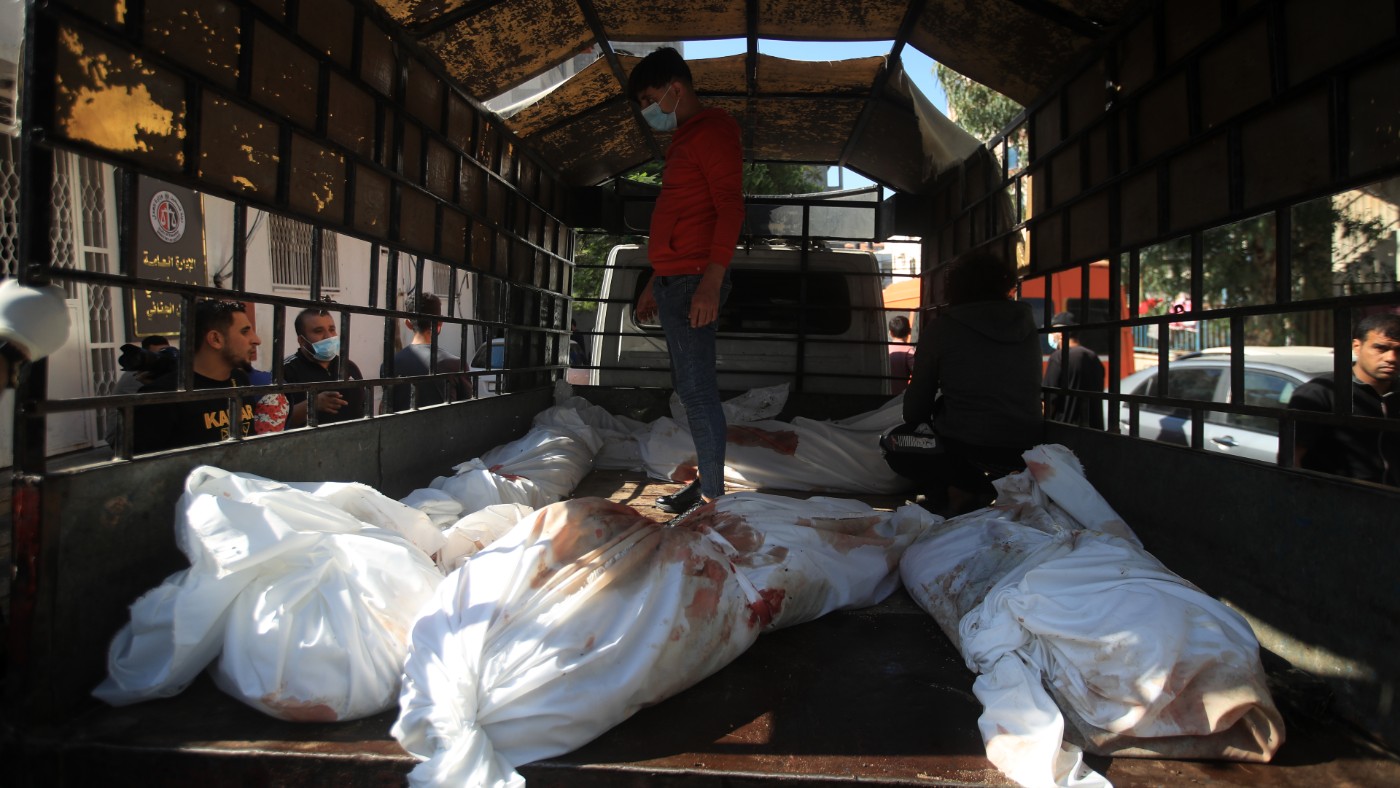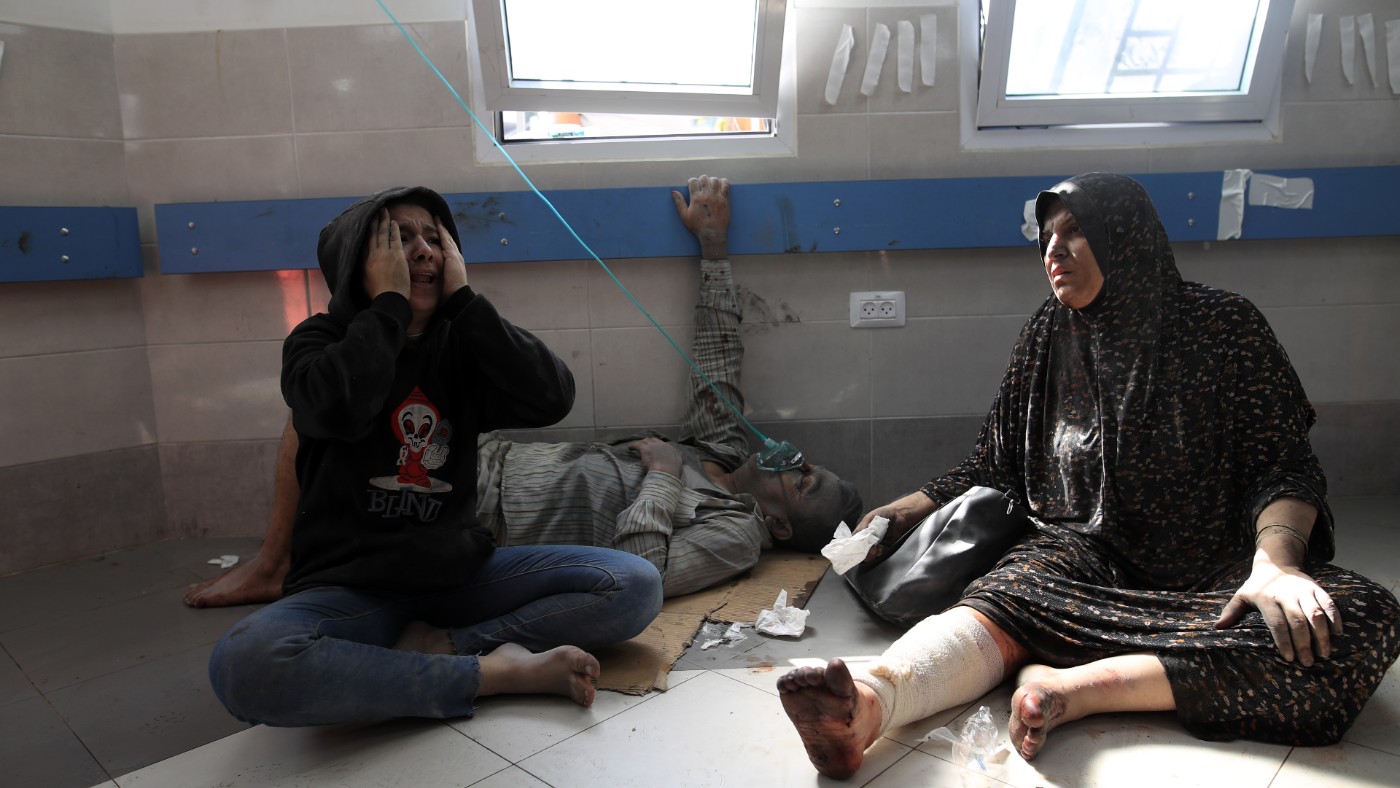Israel-Palestine war: Survivors of Israel's hospital attack describe 'horrifying surreal' scenes

A doctor at Gaza’s al-Ahli Arab hospital has described the “surreal” and “horrifying” scenes he witnessed in the aftermath of an Israeli air strike that killed at least 471 Palestinians there last night.
“The brutality and the nature of the injuries we saw were something we had never witnessed in any attack on Gaza before,” Mohammed Gniem told Middle East Eye, after an Israeli bomb ripped through the hospital, leaving the bodies of the dead and wounded in its wake.
“It's so surreal, it could have been a dream. Even in cinema, if they wanted to create a horrifying scene, they wouldn’t make a scene like this,” Gniem said.
“We still can’t believe that what happened is a reality. It’s a hospital! Protected by international humanitarian law. Any displaced person who goes there, any medical sector worker, is supposed to be protected within it.”
The massacre marks the single greatest loss of life in the ongoing conflict, which has seen at least 3,000 Palestinians killed in Gaza and the West Bank, and 1,400 people killed in Israel. Israeli siege and air strikes on Gaza have continued since 7 October, following a surprise Hamas-led attack on Israel.
Stay informed with MEE's newsletters
Sign up to get the latest alerts, insights and analysis, starting with Turkey Unpacked
Thousands of displaced Palestinians were sheltering in the courtyards of al-Ahli hospital in Gaza City, assuming that they were in a safe place. Many of those are now dead or seriously wounded.
One witness to the attack, who lives a kilometre away from the hospital, told MEE the “sound of the explosion was so intense and terrifying. It felt like it was here in my house”.
The local resident said he had been at the hospital two days ago and seen “huge numbers of people there, either patients or those who had to evacuate their houses and found shelter in the hospital. The yard was full of people. The sound of the explosion was crazy.”
“I have never seen anything like what I saw last night,” Amr Abu Nada, a journalist from the besieged Gaza Strip, told MEE. “It was the most heinous massacre. Most of the children killed were blown apart. I fainted while taking photos it was so horrible.”
Abu Nada said that healthcare professionals at al-Shifa hospital had asked journalists to evacuate the media tent there so that they would have room to accommodate those killed at al-Ahli.
“It was terrifying, especially for parents who were looking for their children among the dead,” he said. “The most painful thing was a patient who was injured at al-Shifa who had gone to al-Ahli hospital, where he was killed.”
One eyewitness, who did not wish to be named, told MEE that Israel “threatened to bomb the hospital during the first days of the attack, but we never thought they would actually do it”.
“The explosion was massive and unexpected. They did not even give prior warning,” the eyewitness said.
“Bombs fell in the yards of the hospital where hundreds of families were taking refuge from the bombing outside. They thought the hospital would be a safe place.”
Health system 'brought to its knees'
Gniem said that the massacre had shattered Gaza’s health system.
“Before the massacre, our hospital was already on the brink. Rooms were filled with those healing from previous massacres, and every corridor was filled with displaced people who sought a safe place to stay,” the doctor said.
“The massacre, however, brought our health system to its knees. We were already hanging by a thread: depleted medical supplies, vanishing fuel, and with a power outage leaving us without electricity or oxygen. And that was before the aftermath of the massacre hit us.”
“Try picturing a hospital already at capacity,” Gniem said. “Then add an influx of 500 of the injured and deceased. What we saw was heart-wrenching. The nature of the injuries was truly horrifying. The children who arrived looked like fragments, like body parts,” he told MEE.
The doctor said that he had seen the bellies of children ripped open, “their remains were coming out of their bodies. All these injuries came while the staff were exhausted and the hospital was full.
“In a facility already stretched thin, our staff had to make do, treating those injured wherever space permitted, on the bare ground, with whatever scant supplies we had left,” Gniem said.
This article is available in French on Middle East Eye French edition.
Middle East Eye delivers independent and unrivalled coverage and analysis of the Middle East, North Africa and beyond. To learn more about republishing this content and the associated fees, please fill out this form. More about MEE can be found here.






